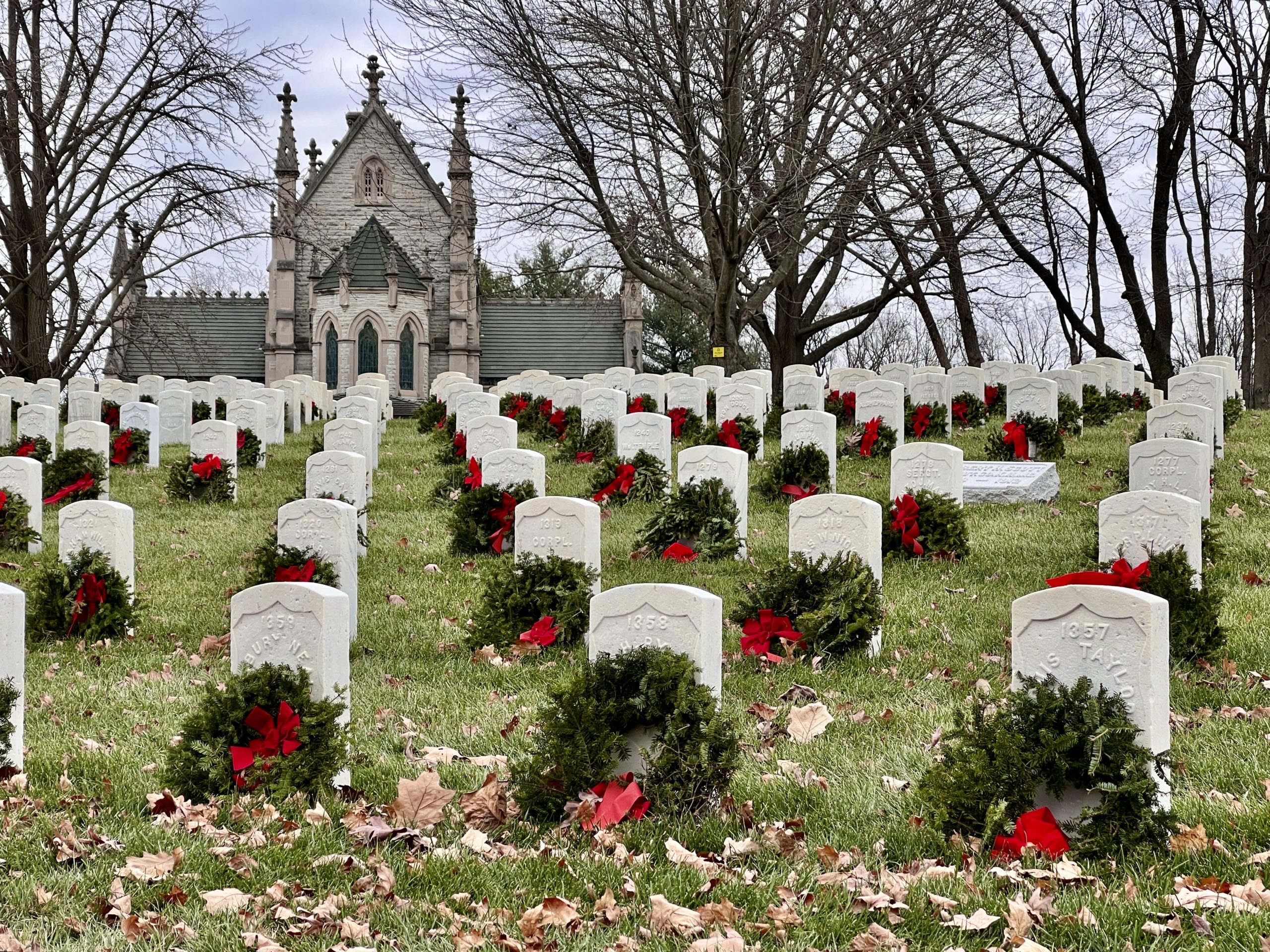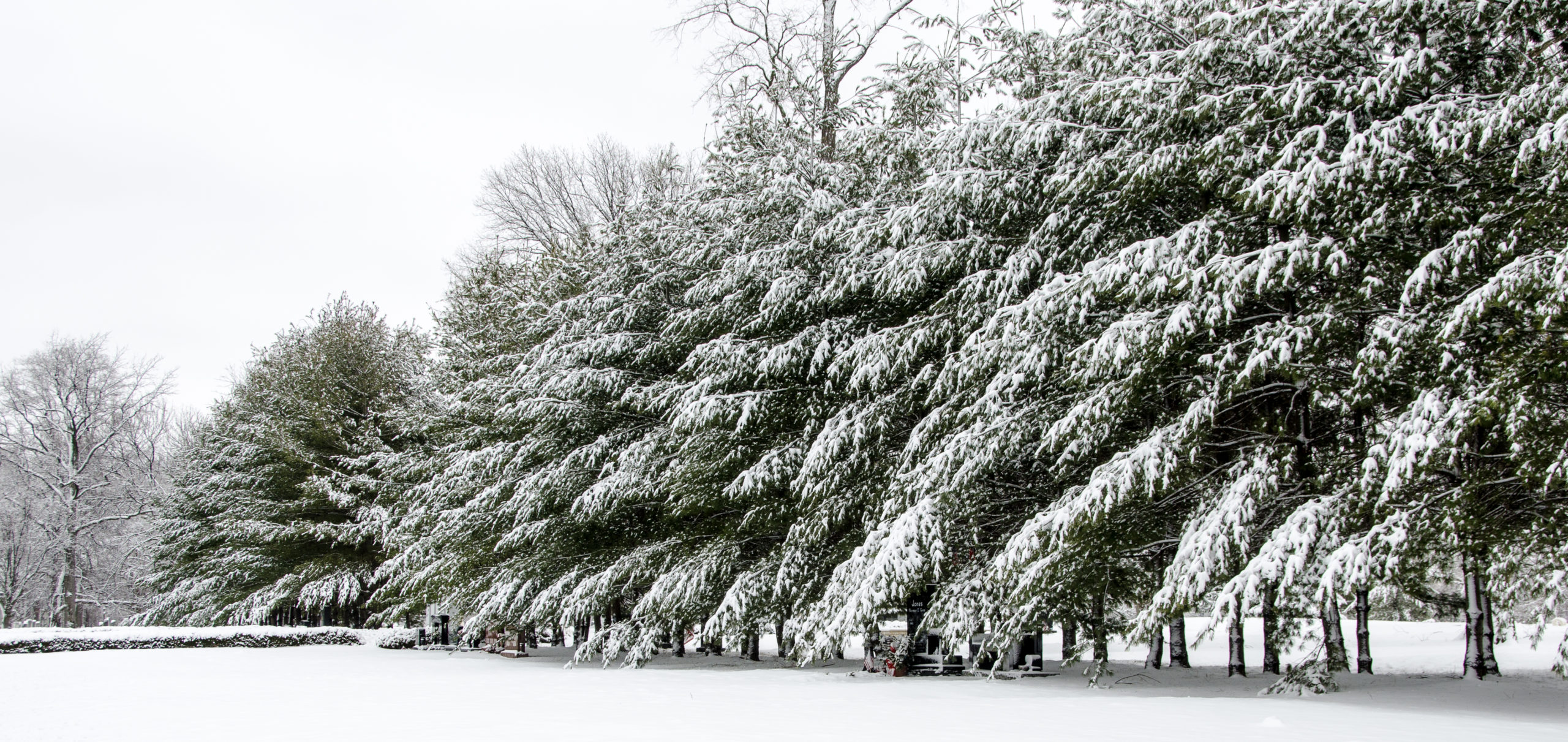Tree of the Month – Evergreens
 As the winter blankets the cemetery, the natural environment changes. Trees lose their leaves, the annuals are removed from their vases, and plants start their long dormant cycle. But some trees stay green — evergreen. Over the generations, society has taken inspiration from these types of trees and attached symbolism to them. Based in religion, the trees have come to signify immortality and everlasting life. Because of this, evergreen trees have become synonymous with death, faith and cemeteries. Planted in cemeteries around the country, evergreen trees are meant to remind us of something after life on earth.
As the winter blankets the cemetery, the natural environment changes. Trees lose their leaves, the annuals are removed from their vases, and plants start their long dormant cycle. But some trees stay green — evergreen. Over the generations, society has taken inspiration from these types of trees and attached symbolism to them. Based in religion, the trees have come to signify immortality and everlasting life. Because of this, evergreen trees have become synonymous with death, faith and cemeteries. Planted in cemeteries around the country, evergreen trees are meant to remind us of something after life on earth.
 This symbolism has evolved into placing evergreen wreaths or grave blankets on graves for the holidays. Families place wreaths on their loved ones’ graves, and volunteers across the nation place wreaths on individual veterans’ graves in over 1,100 locations throughout the U.S., including The National Cemetery at Crown Hill Cemetery.
This symbolism has evolved into placing evergreen wreaths or grave blankets on graves for the holidays. Families place wreaths on their loved ones’ graves, and volunteers across the nation place wreaths on individual veterans’ graves in over 1,100 locations throughout the U.S., including The National Cemetery at Crown Hill Cemetery.
Crown Hill is home to 15 species of evergreen conifer (cone-bearing) trees; of those, six are native to the state of Indiana: White pine, Jack pine, White and Red cedar, American holly, and Hemlock. Christmas trees are the most recognizable evergreen. Commercially, the most common Christmas trees in Indiana are Canaan fir and Scotch pine. You might not recognize the Scotch pine at Crown Hill because we do not prune them annually to get the conical shape.
Crown Hill’s Evergreens:
White pine, Jack pine, Pitch pine, Austrian Pine, White and Red cedar, White fir, White spruce, Scotch pine, Colorado Blue spruce, Douglas fir, Norway spruce, Eastern hemlock, Red pine, and American holly.
– Carrie Tauscher, Arboretum Director
– Jeannie Regan-Dinius, Director of Historic Preservation


